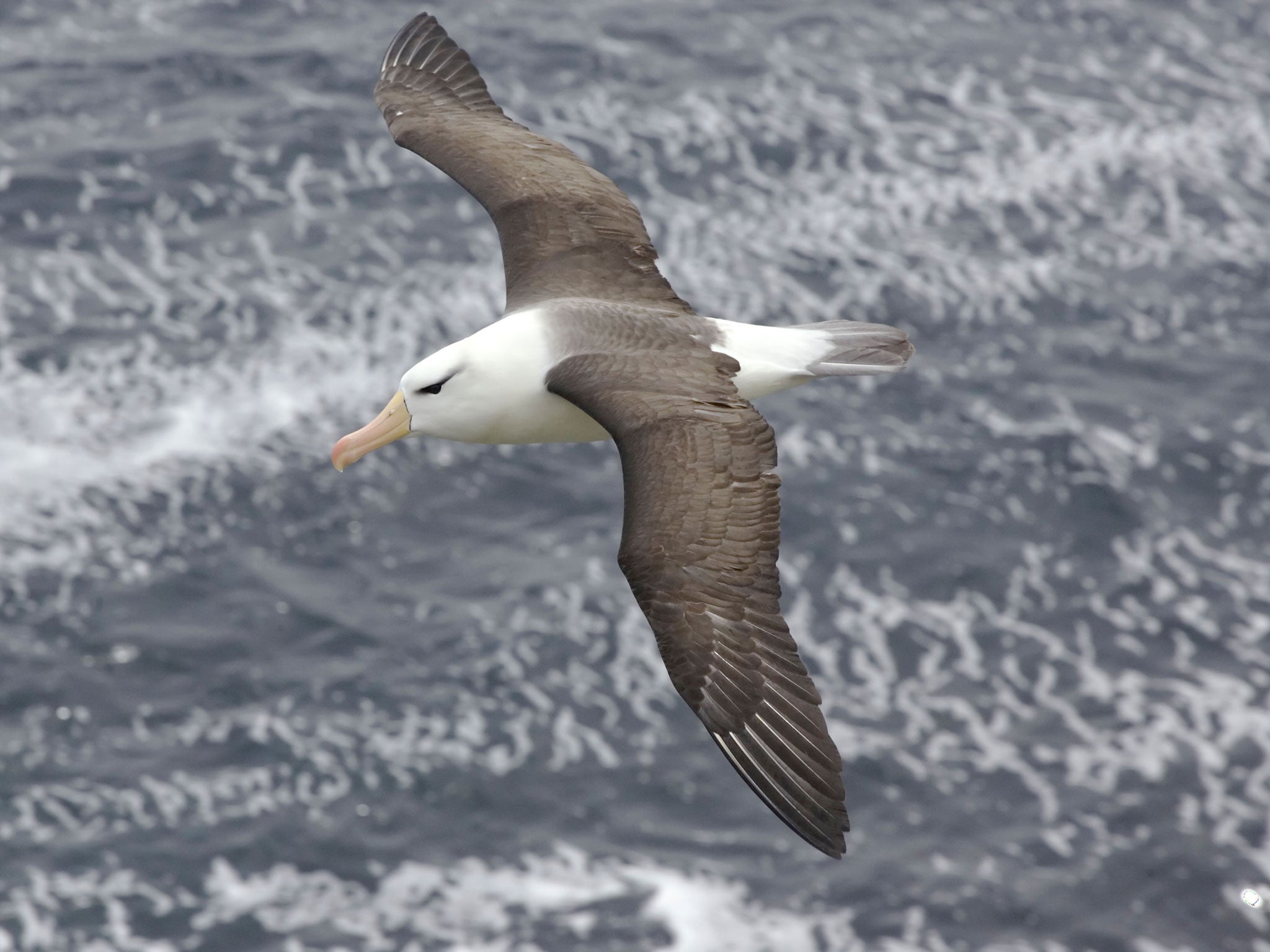Albatrosses fish for squid using luminous organisms in the sea, revolutionary monitoring device reveals
Tag can detect an array of different actions by animals in minute detail such as a ‘double take’ when a penguin sees a squid or how an unhappy elephant walks

Albatrosses fish for squid by spending hours paddling around in circles to stir up bioluminescent organisms on the surface of the sea, a revolutionary new tag that even can sense animals’ emotions has discovered.
About 100 different species – from penguins to cheetahs to humans – have been tagged with the device, which monitors a number of factors such as speed, orientation, temperature, light and pressure.
It is so sensitive that the inventors describe the information it can produce as a “daily diary” of an animal’s life.
For example, it can detect when a penguin sitting down on its nest gets up, takes a few steps in its trademark waddle, shakes itself, dives into the water, where it swims and even the moment it catches a squid.
This can be used to work out whether a particular penguin population is struggling to find enough food to cover the energy expended when fishing.
The tags, which cost about £400, have also been able to detect a different walking style used by elephants when they are happy or sad.
It gives such a detailed picture of the way animals behave it could even be used to predict what they are likely to do next.
One of the most striking findings was about the wandering albatross, one of the biggest birds in the world.
GPS tags had revealed they spent considerable time floating on the same spot at night and it was thought they were simply sleeping.
However, Professor Rory Wilson, head of the team behind the daily diary tag, said: “On some dark nights, wandering albatrosses swim in crazy circles around and around and around for between 40 seconds and seven hours continuously.
“We thought ‘what they swim in a circle and then a squid will jump in their mouth?’ What’s going on here?
“What we think they are doing, and we’re collecting data on this now, is when it is very dark in particular areas of the ocean you get high bioluminescence.
“There are areas of the ocean where this is such a powerful phenomenon … it’s so bright you can read a book.
“Squid, like moths, say ‘it’s beautiful, I have to go to the light’ and the albatross catches them. That’s really cool.”
Professor Wilson, of Swansea University, specialises in the study of penguins and he showed how the tag could monitor what the animals did in minute detail even when under the water.
For example, it can pick up when a penguin is cleaning itself, which it does regularly while at sea in between dives down to catch squid and other prey.
He showed a chart that tracked a penguin diving down on one fishing trip. After apparently not seeing anything, it starts to go back up to the surface, but then does a “double take” and surges down with flippers working hard.
“The actual process of catching this squid is captured here,” he said.
With elephants, they have been able to detect subtle differences in their gait, depending on their mood, something that can also be seen in humans.
“If you look at the data from the tag, you’ll see an elephant walking towards something it likes in a particular way, [saying] ‘ooh, it’s a mud bath,’” Professor Wilson said.
“When that elephant is then made to go away from the mud bath by a dominant matriarch, it walks in a different way.
“The implications for understanding an animals state, stress and other things, are huge.”
He said he was in touch with elephant researchers in Africa about using the technique to study whether elephants became stressed in areas where they had witnesses violence.
Join our commenting forum
Join thought-provoking conversations, follow other Independent readers and see their replies
Comments
Bookmark popover
Removed from bookmarks